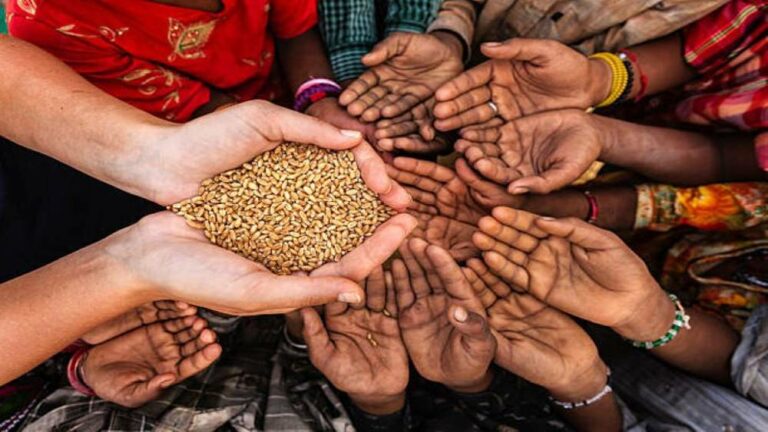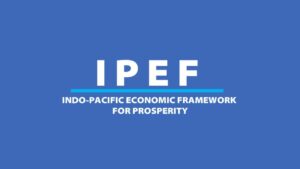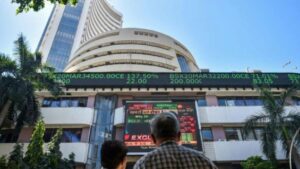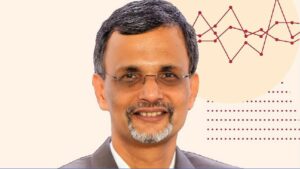During COVID period, for 28 months free distribution of food grains was done under Pradhan Mantri Garib Kalyan Anna Yojana (PMGKAY). Now the Central government has decided to provide Free Foodgrains to about 81.35 crore beneficiaries under the National Food Security Act for one year from January 1, 2023. The Centre will spend more than Rs 2 lakh crore in this period as food subsidy under NFSA and other welfare schemes.
The government of India has announced a new year’s gift!
In a Cabinet meeting held on December 23, 2022, the Union government decided to give 5 kilograms of free foodgrains every month for around 81 crore legatees of the National Food Security Act (NFSA) in the year 2023 instead of charging a subsidized sum as is presently done. This move will relax the shock of the termination of the Pradhan Mantri Garib Kalyan Anna Yojana (PMGKAY). The scheme ended in December 2022 and has provided an additional 5 kilograms of free grains every month to NFSA beneficiaries after being hurled as a crisis measure in response to the COVID-19 epidemic in April 2020 and since received numerous postponements.
The NFSA 2013 allows up to 75% of the people staying in rural areas and 50% of the people staying in urban areas to obtain subsidized foodgrains from the Targeted Public Distribution System (TDPS) under two groups of beneficiaries. They are Antodaya Anna Yojana (AAY) households and Priority Households (PHH). The NFSA allows 35 kilograms of food grains per AAY household per month, and 5 kilograms of foodgrains per PHH person per month, at a subsidized amount of ₹3 per kilogram of rice, ₹2 per kilogram of wheat and ₹1 per kilogram of coarse cereal. Approximately 81 crore people have been spotted and are covered under the NFSA yearly.
Then again, the PMGKAY was publicized during the nationwide lockdown in March 2020, to safeguard livings in the pandemic by giving additional 5 kilograms of free food grains per person per month to the NFSA beneficiaries. Primarily announced for a period of 3 months from April to June 2020, the plan ran with consecutive postponements until December 2022.
Impact on the Food Subsidy
Generally, food subsidies in India are messy. The cessation of PMGKAY would have been challenging at any point, but the complimentary free provision of foodgrains under the NFSA has made the withdrawal more pleasant. It is a clever political step that includes economic advantages in the near term. In a normal year, without COVID disturbances, the government of India’s food subsidy bill on account of the NFSA amounted to about ₹200,000 crores. However, the PMGKAY doubled that amount in the previous 33 months. From a financial viewpoint, the termination of the PMGKAY saves around ₹200,000 crores per annum.
However, the facility of free foodgrains under the NFSA comes at a cost. This cost can be viewed as incomes sacrificed from food grains that were given at subsidized rates until now. As per FY23 Budget Estimates (BE), the total cost of acquisition and distribution cost (economic cost) shouldered by the Food Corporation of India of rice and wheat are around ₹3,700 per quintal and ₹2,600 per quintal, respectively. Considering this and the unaltered number of beneficiaries and foodgrains allocation, total revenue loss can be estimated at around ₹15,000 crores annually.
For FY23, taking into account the yearly necessity of food grains under NFSA and other welfare schemes namely PM POSHAN, Wheat Based Nutrition Programme, etc., nine months of allocation under the PMGKAY and forfeiture of incomes from free foodgrain provision in Q4 FY23, the total cost of food subsidy can be estimated at around ₹3,20,000 crores. This is significantly greater than the BE of ₹2,10,000 crores, which had not accounted for the postponement of the PMGKAY at the time of the Budget announcement. For FY24, the termination of the PMGKAY is expected to restructure the food subsidy cost to close to ₹2,10,000 crores – an incremental saving of roughly ₹1,00,000 crores.
Politicking move
A thorough analysis of the move reveals that this is a political move. A simple economic judgment would have been to terminate the PMGKAY, which was always meant to be a momentary measure. However, this free foodgrains declaration is damage control to fight any unfavorable consequence from stopping the PMGKAY. If this declaration was to reduce criticism against the end of the PMGKAY, it is doubtful what will happen at the end of 2023, when the free foodgrains scheme is set to end. Certainly, the strategy will continue beyond 2023 because the government cannot afford to roll back free foodgrains in 2024 in the run-up to the general election.
The more delicate political upshot will be in the States, particularly those such as Tamil Nadu, Kerala, Karnataka, West Bengal, and Jharkhand, which all offer free foodgrains utilizing their own money to further subsidize the Central distribution. A few others namely Andhra Pradesh, Chhattisgarh, Odisha, and Telangana also offer supplementary subsidies, though their ration is not free. Although this can generate a fiscal surplus, it takes away a significant political plank for States. The central government will now take complete praise for something few States had been offering earlier. It is also unsure whether States or Central government will now shoulder the cost of transportation of foodgrains.
The configuration of the government’s plan indicates that household budgets could be overturned severely. The Right to Food Campaign assesses that poor families will be compelled to spend ₹750 to ₹900 a month to access the present level of ration privilege. Ration card holders who have received 10 kilograms of grains a person every month for the previous two years will see their rights suddenly decreased by 50%. No doubt, their spending on their NFSA privilege will also drop. For example, somebody spending ₹8 for four kilograms of wheat and ₹3 for a kilogram of rice under NFSA will now procure those grains free, saving ₹11 a month. However, that is overshadowed by the added ₹150 to ₹175 they will need to spend to buy the 5 kilograms earlier offered free under the PMGKAY in the open market valuing market rates for rice and wheat at around ₹30 to ₹35 per kilogram.
The amplified expenditure will be even harsher for those in the States which anyway offer free NFSA foodgrains since beneficiaries in those States will not witness any savings because of the Central government declaration. However, the usage of foodgrains as part of a meal differs significantly by State, varying from about 200 grams per person a day in Kerala to 400 grams in Bihar, and the influence of the move is thus likely to be the highest in the Hindi heartland States where grains make up a higher ratio of the diet.
Need a Comprehensive Workout
In 2013, this subsidized rate was decided for a time period of three years, with a stipulation to modify rates afterward in proportion to minimum support prices (MSPs) which has never arisen. The absence of modification is even more disturbing given that MSPs for rice and wheat have witnessed an upward revision of 39% and 30%, respectively, between FY17 and FY23.
At a cost of less than 10% of the total food subsidy bill of the nation, the free foodgrains scheme is not insufferable. A continuing rise in tax resilience can finance this for some more years. Nevertheless, it is crucial to discuss, debate, and devise the sunset clause well in advance. This is because a free foodgrains policy contains an ethical threat. In a nation with a diminishing Labour Force Participation Rate (LFPR) and one of the tiniest LFPRs for women globally, free foodgrains can weaken the inducement to work for sustenance.
Every economic policy comes with costs and benefits. A vigilant assessment of short, medium, and long-term advantages against costs, both economic and social in the case of the free foodgrains policy will decide its longevity. While the free foodgrains scheme is a noble gesture and should be an enduring feature in a welfare-driven state like India, one wonders about the timing of the announcement. Also, the fact that corruption overrides just about every department and scheme, one can only hope that the noble-in-intent scheme does live up to noble-in-deed as well.




















